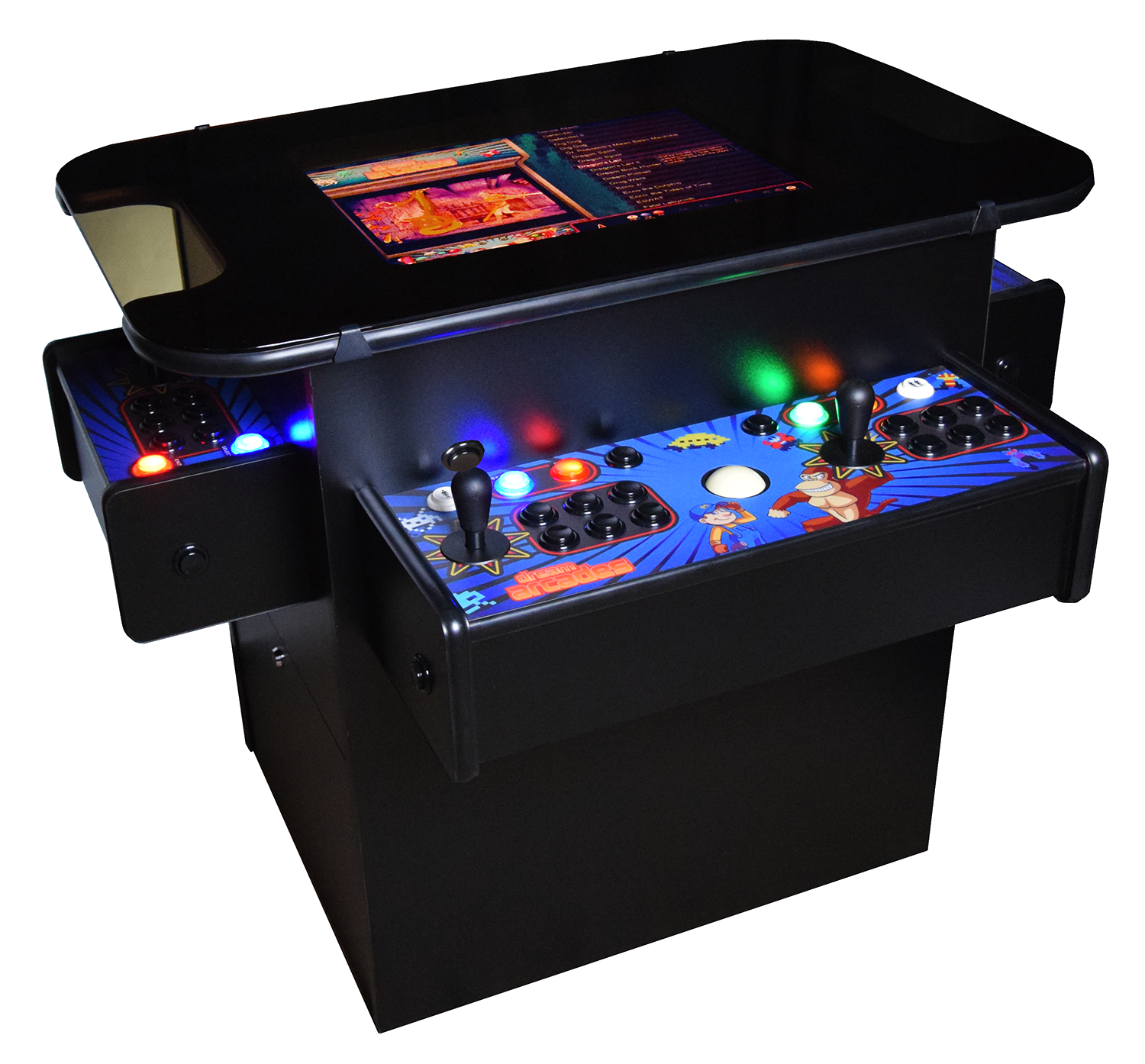History and Evolution of Arcade Cocktail Cabinets: Arcade Cocktail Cabinet Glass

The arcade cocktail cabinet, a distinctive piece of gaming history, represents a unique blend of social interaction and competitive gameplay. Its evolution reflects broader technological advancements in the video game industry and shifting social trends in entertainment. From humble beginnings, it has undergone significant transformations in design, functionality, and aesthetic appeal.
Origins and Early Development
The cocktail cabinet’s origins trace back to the early 1970s, emerging alongside the burgeoning arcade game industry. Early models, often featuring simple, single-player games like Pong clones, were characterized by their compact, tabletop design. This design, inspired by cocktail tables found in bars and lounges, facilitated social interaction as players could easily face each other. The use of a slanted, downward-facing screen was a key innovation, optimizing viewing angles for players seated opposite one another. The relatively small screen size and limited processing power of the early microprocessors constrained the complexity of the games.
Technological Advancements and Design Changes
The evolution of cocktail cabinets is intrinsically linked to advancements in microprocessor technology and display technology. The introduction of more powerful processors in the late 1970s and early 1980s enabled the development of more complex and visually appealing games. Larger screens, initially using CRT technology, became feasible, enhancing the gaming experience. The integration of stereo sound systems further improved the immersive quality of gameplay. Cabinet designs also evolved, with manufacturers experimenting with different materials, aesthetics, and control schemes. Some cabinets incorporated more elaborate artwork and lighting, while others prioritized durability and ease of maintenance. The transition from CRT to LCD screens in later years led to smaller, more energy-efficient cabinets.
Aesthetic Styles Across Eras
The aesthetic styles of arcade cocktail cabinets varied significantly across different eras, mirroring broader design trends. Early cabinets often featured simple, functional designs, with a focus on practicality and durability. The 1980s saw a rise in more flamboyant and colorful designs, reflecting the vibrant aesthetic of the era. Many cabinets incorporated bold graphics, bright colors, and custom artwork that complemented the game’s theme. The late 1980s and 1990s witnessed a shift towards more streamlined and minimalist designs, often using darker colors and less ornamentation. Modern cocktail cabinets often blend retro aesthetics with contemporary features, offering a nostalgic yet updated gaming experience.
Timeline of Major Milestones
| Year | Milestone | Description | Impact |
|---|---|---|---|
| 1970s | First Cocktail Cabinets Appear | Simple designs, single-player games (e.g., Pong variations). | Established the basic cocktail cabinet form factor. |
| Early 1980s | Increased Processing Power | More complex games, larger screens become possible. | Enabled more sophisticated gameplay and graphics. |
| Mid-1980s | Rise of Custom Artwork | Cabinet designs become more elaborate and themed. | Enhanced the visual appeal and branding of games. |
| Late 1980s – 1990s | Streamlined Designs | Minimalist aesthetics, focus on functionality. | Reflected changing design trends in the broader market. |
| 2000s – Present | LCD Screens and Retro Revival | Smaller, more energy-efficient cabinets; resurgence in popularity. | Modernized the cocktail cabinet format while preserving its classic appeal. |
Comparison of Popular Models, Arcade cocktail cabinet glass
| Decade | Model (Example) | Screen Size (approx.) | Control Type | Game Selection |
|---|---|---|---|---|
| 1970s | Generic Pong Cocktail Cabinet | 9 inches | Analog joysticks | Pong variations |
| 1980s | Galaga Cocktail Cabinet | 19 inches | Trackball, buttons | Galaga, other Namco titles |
| 1990s | Custom-built Mortal Kombat Cabinet | 25 inches | Joystick, buttons | Mortal Kombat, other fighting games |
| 2010s-Present | Modern Arcade1Up Cocktail Cabinet | 17 inches | Joystick, buttons | Various classic titles (e.g., Pac-Man, Centipede) |
